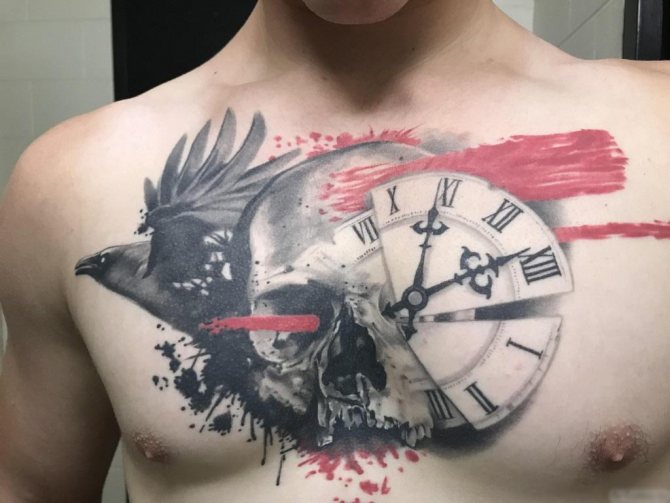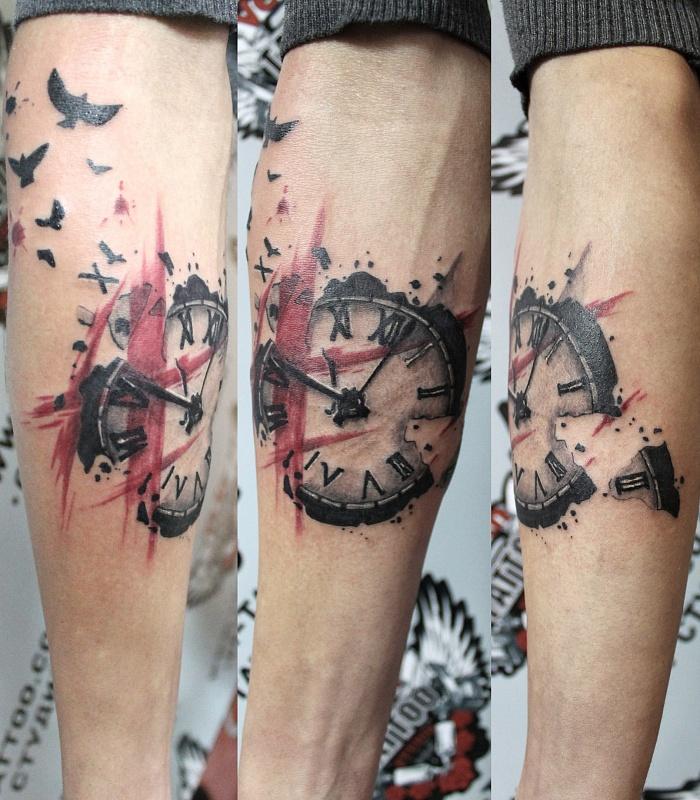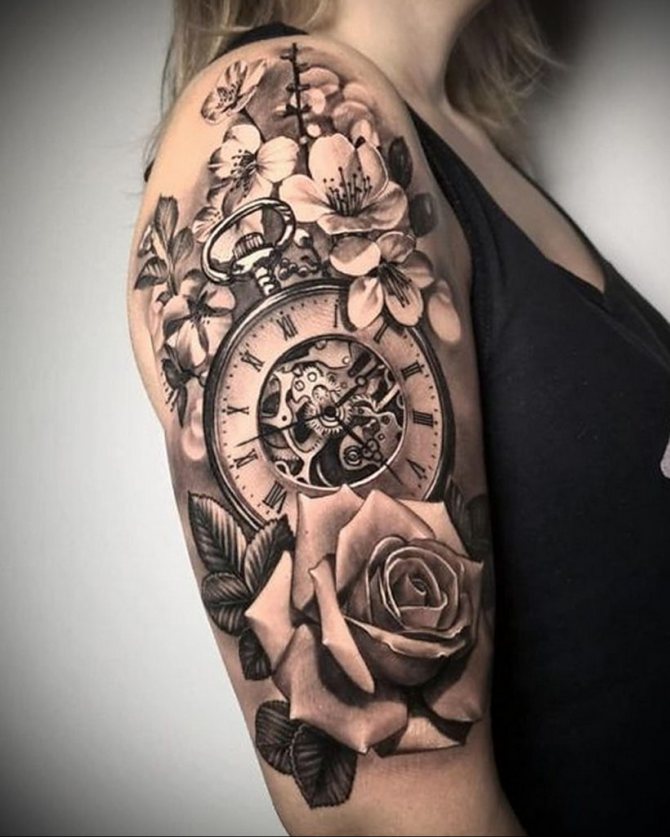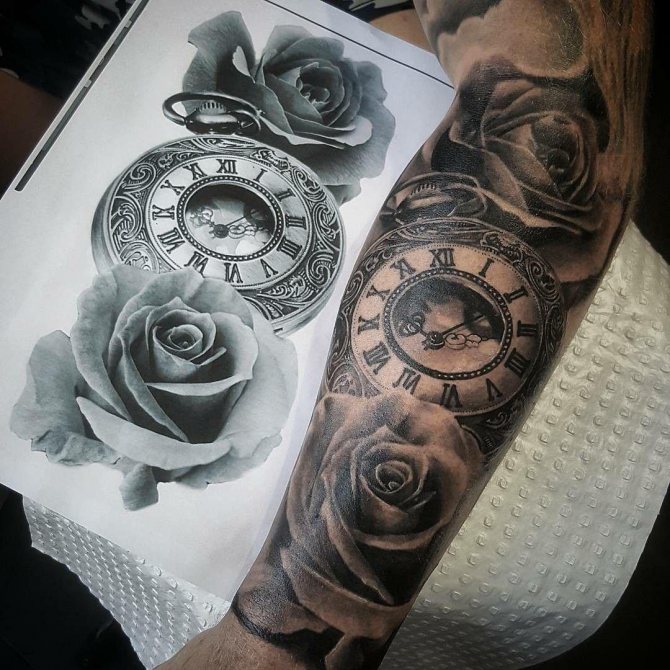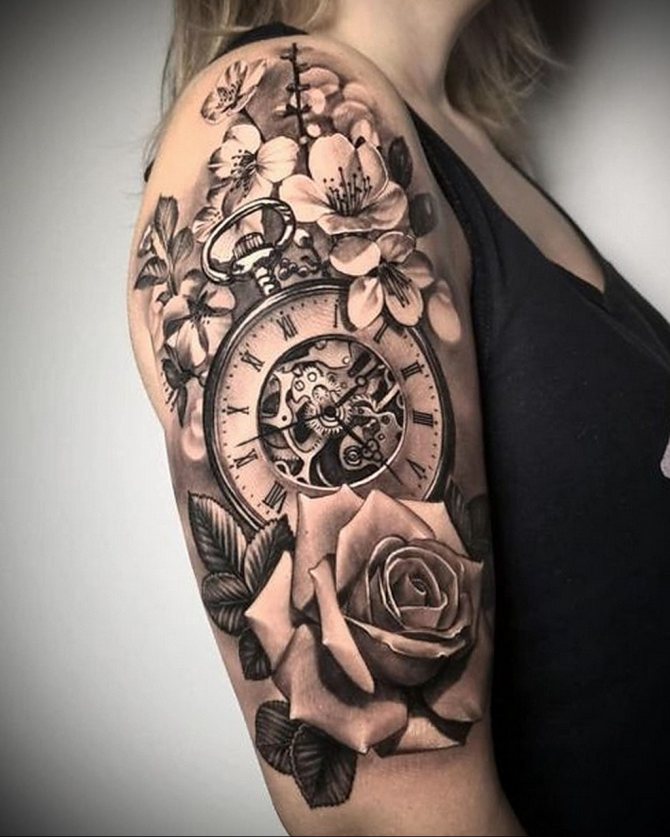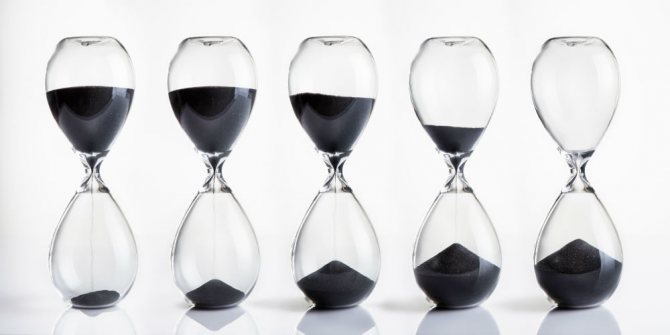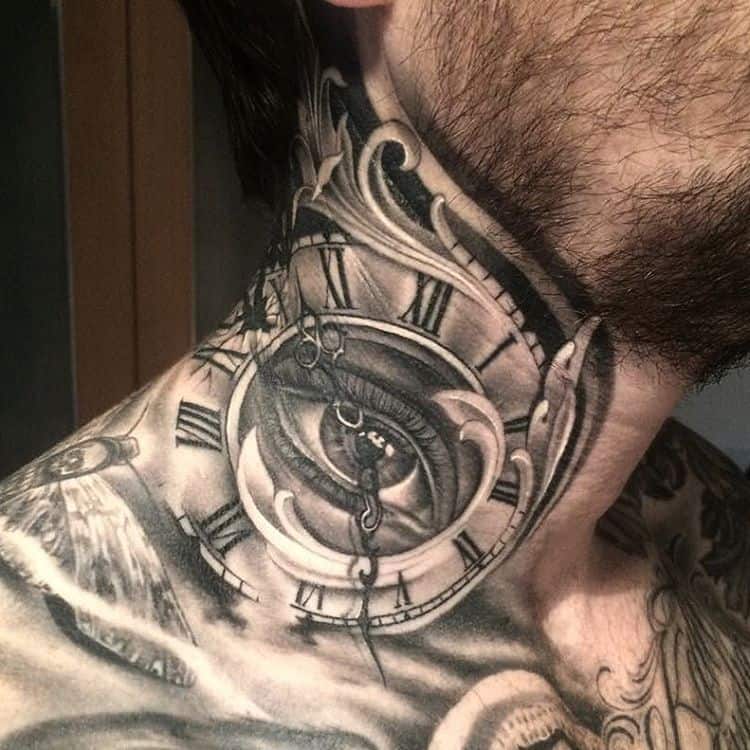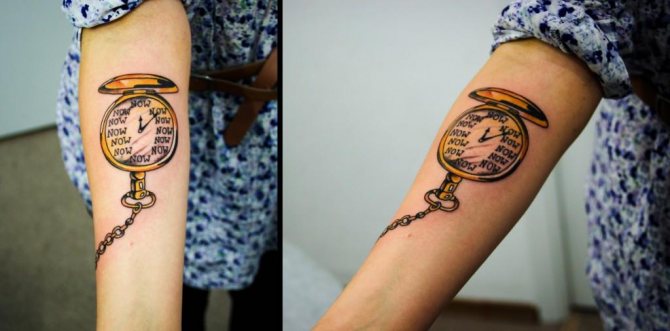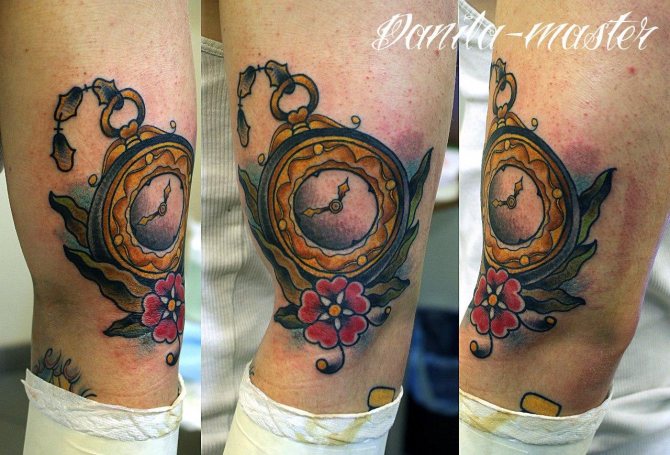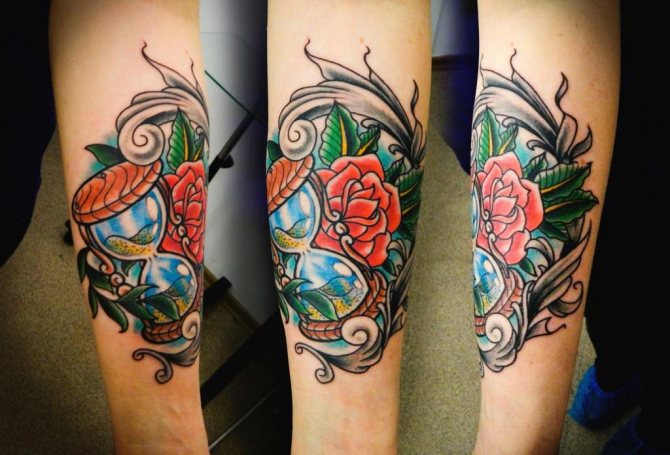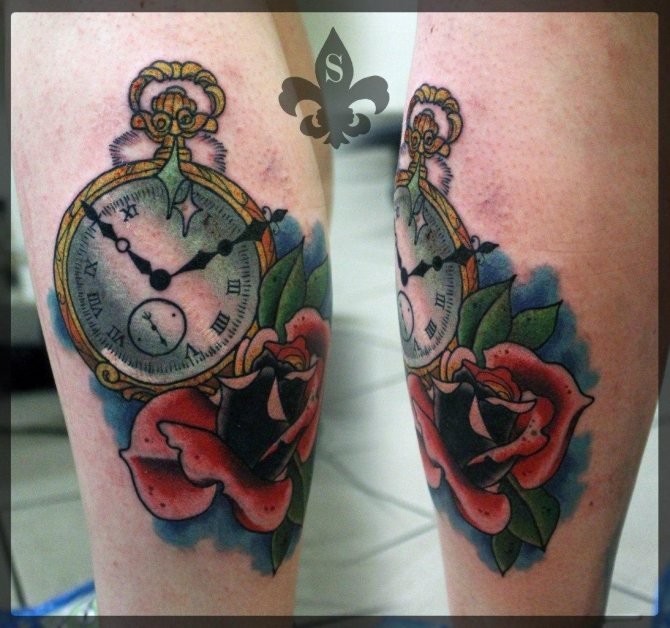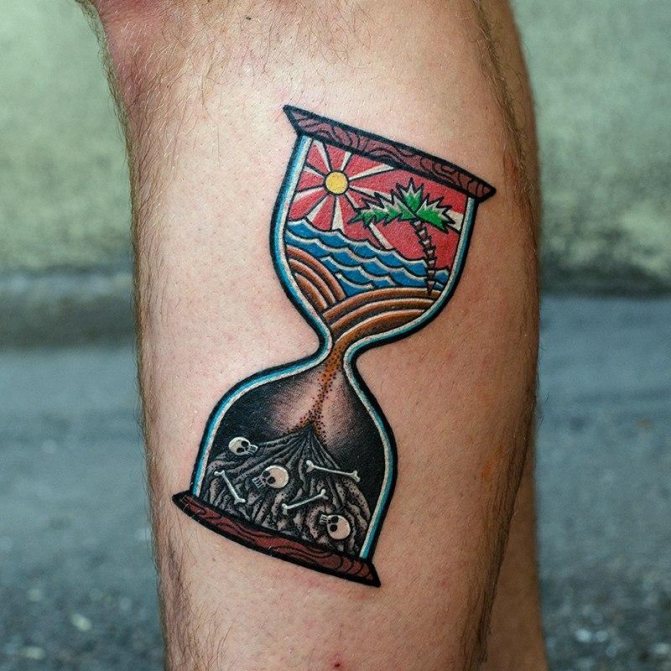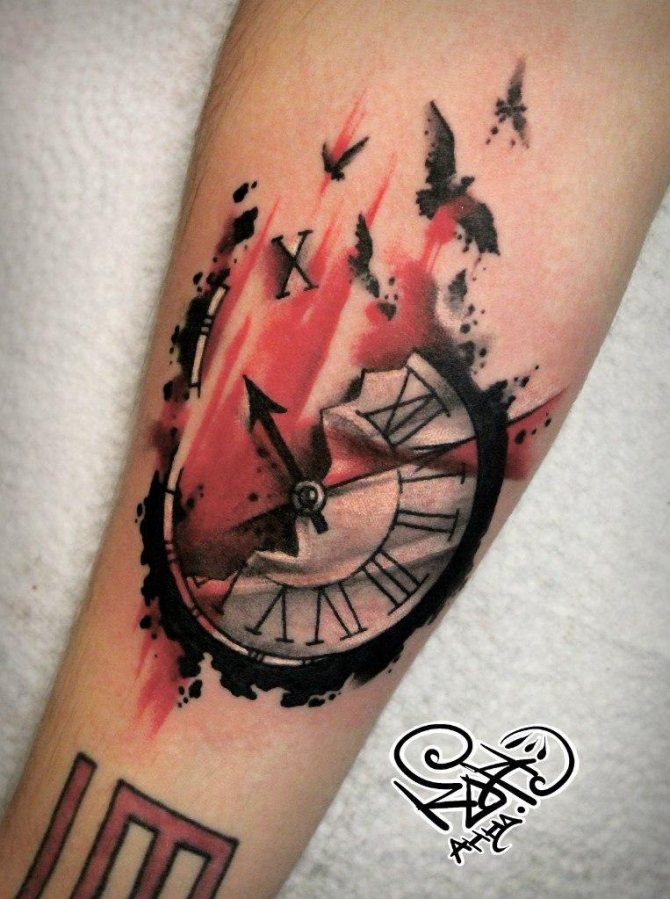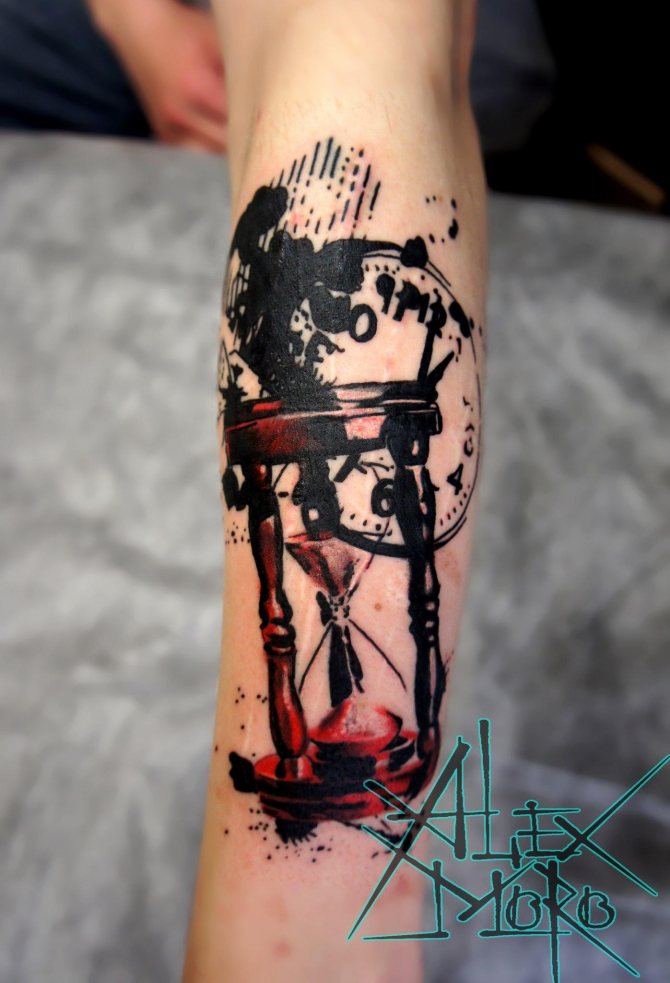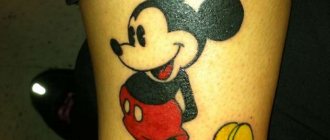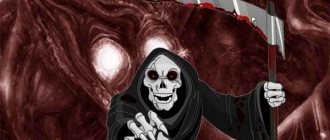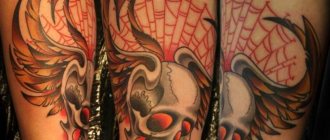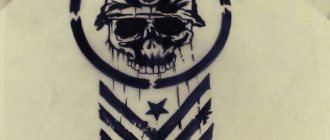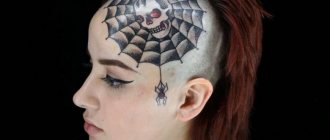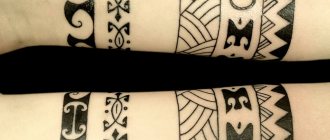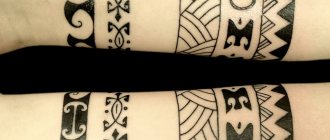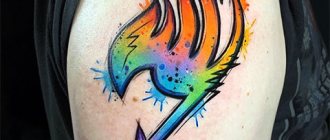What is the image of time in world culture? What are the traditional symbolic meanings of clocks, including hourglasses, in ancient mythology and Christianity? How did the symbolism of the clock image develop in the painting and applied arts of modern times?
Origin of the symbol
In ancient times, people determined the time only approximately and by the changes that occur in nature. At first they tracked only the changes in the seasons, then the phases of the moon and then the position of the sun in the sky. Animals and plants also helped a lot in determining the time.

As society developed, it became necessary to measure time more accurately. In this connection, there appeared first the sundial, then the hourglass, and then the mechanical clock. And from the moment of their appearance they began to be attributed magical powers.
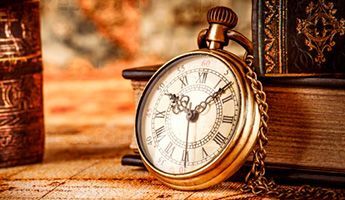

Regardless of religion and culture, the clock always testifies to the fluidity of life and the frailty of existence. And at the same time is a symbol of the eternity of the spirit.


The interpretation of the symbol depends on the shape and type of clock:
The hourglass symbolizes infinity and cyclicality. And if you put it on the side, it resembles a symbol of infinity. Every turning of the flask symbolized the beginning of a new cycle of life.
Mechanical clocks with their shape and constantly moving hands remind others of the continuous movement in a circle, which can also be interpreted as a symbol of infinity and cyclicality.


In general, this symbol has other interpretations: the frailty of life and mortality of the body, the inexorably fleeing time of life, the cycles of destruction and rebirth, infinity and duality.
LiveInternetLiveInternet
I was part of sand, part of the endless current running tirelessly between two huge cones of glass, and I liked the life of sand, countless sand grains with their common and uncommon destiny, their feasts, their holidays and weekdays, their passions, their high impulses, all the pathos of their good intentions. Yuri Levitansky. 1984. Excerpt in full
Determining the place and time of birth of the sand chronometer is an impossible task. Some bet on the terribly ancient Chinese, others on no less ancient Egyptians. The Greeks were known as active users of the hourglass. Probably, like sundials, the hourglass has been invented not just once, but by many. Researchers emphasize the secondary character of the hourglass in relation to the sundial. This is natural, because sundials, in general, have always existed, it was only necessary to see them, and the sand glass needed to be invented.
You can make up a fable about a dreamer blowing grains of sand from the palm of his hand in close proximity to the sundial. The movement of the gnomon's shadow suddenly stops time for the birth of an idea, and our beholder rushes after two cut-glass glasses... Some sources claim that the hourglass came into existence only after the invention of water. Be that as it may, I repeat that the hourglass chronometer did not appear before the ability to blow clear glass into hollow vessels. The same Ancient Rome is silent about the hourglass, because the Romans produced only turbid, opaque glass. European Middle Ages is the time of the real flourishing of hourglasses. They were particularly used by monks and sailors. One of the oldest mentions of such clocks in Europe is a record from 1339, found in Paris, instructing the preparation of fine sand from sifted black marble powder boiled in wine and dried in the sun. Erasmus of Rotterdam's watch.
The forty-fourth (or seventeenth, whatever) hourglass was made like this. They made two half-spherical hollow flasks of transparent glass with a narrow neck on top. They poured the required measure of sand, put both flasks neck to neck and between them put a spout - a metal plate with a hole (the diameter of the hole depended on how much time would measure this clock). The joint was sealed with resin. Sand played an important role in the clock. The sand was thoroughly crushed, sifted through sieves, dried, fried and polished. In addition to the sand itself, the clocks were filled with treated eggshells, zinc and lead dust. The accuracy of the sand chronometer depended on the smoothness of the walls of the flasks and the uniformity of the sand in them. Since both were disturbed over time, the sand grains were crushed, the hole in the dispenser was abraded and enlarged, the rate of over-pouring of sand increased, the clock began to give a significant error in measurements, and therefore it was necessary to look for a replacement. Ease of use, clarity, and cheapness played no small part in the spread of hourglasses in monasteries and churches to measure the daily cycle of divine services. Some monks wore the hourglass on their feet, secured below the knee with leather straps. The fragility of the hourglass and the short span of time it measured prevented its widespread use. Typically, the hourglass was designed to run for half an hour or an hour. Less common were hourglasses, designed to continuously measure time for three hours, and only in very rare cases built a huge hourglass for 12 hours.
The order of time keeping on the ships of the XV-XVIII centuries.
The undoubted advantage of sand glass over sundials is obvious: they do not depend on light and can measure time in storm, and in the night. Sand glass clocks were particularly important on ships. On cloudy days, when the time could not be told by the celestial bodies, they were used to tell the time by means of sand glass clocks. They used them to measure time intervals of half an hour and beat the ship bell. A twenty-four hour day started at noon, in contrast to the customary order of counting new days and nights from 12 o'clock. If from 00 o'clock on land citizens began March 7, then for seafarers at 12 o'clock it was March 8. Thus, nautical time calculation is ahead of the generally accepted one by 12 hours. The ship's timekeepers had a number of sand chronometers - vials that were synchronously started at 12 o'clock in the afternoon. There were hour, half-hour, and even four-hour - the main - vials. The watchman, in charge of keeping time on the ship, kept a close eye on the shuffling of the sand and at the right moment turned both the half-hour, hour, and four-hour vials upside down. The vial would start a new countdown of the time interval, and the watchman would mark this event by striking a special market-horn. The four o'clock signal served as a watch change; the Naval Code divided the ship's day into six equal periods called Wacht by the German word for "watch, guard. The sailors quickly reworked it in the Russian way. It turned out to be "watch. In this form the word stuck in the Navy. The accuracy of the vials was tested. A half-minute vial was taken and the time of transferring sand from one half to the other was controlled by a weight on a string. The length of the string was 39.2 inches, or 99.6 centimeters. In 30 seconds, the weight suspended on the string made exactly 30 vibrations. The vial verified in this way (as well as the clock verified by the time signal in such cases) is used to check all other vials - hour, half-hour, and so on. It should be said that the watchmen of that time were strictly responsible for keeping the time, and in case of the slightest slip-up they were severely punished. Smaller vials - five-, three- and half-minute vials - were used in determining the speed of the lag and in astronomical observations. The vials served the navy for less than 300 years; they are now permanently retired. But even on modern ships they are remembered by the ringing of a bell every half hour.
To compete with mechanical clocks and in measuring long intervals of time or even continuous measurement of time, in the seventeenth and eighteenth centuries. mainly in Nuremberg and Augsburg began to produce hourglasses with four systems of flasks in one case. Some makers in the first half of the 17th century used an ingenious device to turn the clock. The mathematician De la Tiret made an hourglass to measure seconds intervals, and the astronomer Tycho Brahe tried to replace sand with mercury.The automatic overturning of the hourglass was a problem that attracted the attention of many mathematicians and physicists. Stephan Farfler of Altdorf used a spring mechanism for his clock, which he built in the second half of the 17th century. Another solution to this problem, which takes into account the change in the position of the center of gravity when sand is transferred, is shown in a drawing by Lani in the book "Inventione nuove" published in 1670. The Frenchman Grollier de Servier of Lyon, author of many other remarkable devices, who lived about 100 years later, created an automatic tilting device suitable for the hourglass.
Although the automatic tilting mechanisms of the hourglass did not produce the expected result, the clock, because of its shape and simplicity of operation, still retained some value until recent times, for example it was used by telephone exchanges to time short telephone calls, in courtrooms, physiotherapy rooms, schools and for some domestic needs. In the British House of Commons even today an hourglass for two minutes is used before the "split vote", a method of voting in which MPs rise from their seats and move to the side of the chamber that votes for or against the passage of a law. As the sand pours down, "voting bells" are heard in every corner of the building to let everyone know that "voting" is now in progress.
The hourglass as a symbol
With all that said, the hourglass is a lasting symbol
of keeping time
. Many artists used the hourglass to represent the essence of the present as the moment between the past and the future, the transience and mortality of existence, the duality and cyclical alternation of Chaos and Order, Life and Death, the obligation of gravity and discreteness, and at the same time the flight and continuity of movement, its inexorability and fragility.
ADurer. Melancholy .ADurer. St. Jerome in his cell.
The hourglass is the indispensable
attribute of the Reaper of Death.ADurer. The Knight and DeathZwolle,1480-1490Johann Jakob Scheuchzer. Physica sacra, 4 Volumes, Augsburg und Ulm. 1731Chimes at the Old Town HallVanitas
(lit. Vanity, vanity) is the name of a genre of painting whose compositional center is traditionally an hourglass and symbols with a similar semiotic meaning: a human skull and a wilted flower. The allegorical still lifes were intended as a reminder of the transience of life, the vanity of pleasures and the inevitability of death.
Adriaen Pietersz van de Venne. Ex minimis patet ipse Deus (God is revealed in the smallest work of his creation), Middelburgh. 1623Cornelis Norbertus.David Bailly. l Vanitas Still-life with Portrait -Still-life with Negro. 1650Jan StommesJohann ZoffanyLeidenMasterCa. 1635. Hamburg KunsthalleRaphael Sadele. After Marten de Vos. 1590William Michael Harnett. Memento mori. 1878Gerrit Dou.Simon Renard de Saint-Andre.Kronborg. Allegorie des Memento mori. 1576. am Hauptportal des Schlosses
As a symbol of death and the brevity of earthly existence, the hourglass is often seen on the
tombstones and monuments
The sixteenth and eighteenth centuries. It is believed that there was a tradition of placing an hourglass in the casket of the deceased. An hourglass lying on its side signifies that time has stopped for the deceased. An hourglass with wings symbolizes the rapid flight of time...
La Morte di Ruginello pannello di sinistra, sec. XVII
I
Memento mori. Skeleton in a shroud sitting on a tomb. Western Europe, France, 1547, Ivory. Musée des Arts décoratifs, Paris.Tübingen Stiftskirche.Derbent. Kyrkhlar CemeteryDon Monastery Necropolis
Hourglass is an attribute of
Saturn
.
Janus
logically, he also wore a clock. As one of the hypostases of the ouroboros the hourglass is present
in the alchemist's laboratory.
.
"In my beginning lay my end."Two triangles, touching the tops - essence and substance, forma and materia, spirit and soul, sulfur and mercury, the stable and the changeable, spiritual power and bodily existence. The symbolizing elements are as follows: fire (facing upwards), water (facing downwards). The two triangles that meet are the union of opposites, which become liquid fire or fiery water.Peter Bruegel the Elder0. Adrian van OstadeDavid Teniers the Younger. 1610Jacques Louis PerrierPietro Longhi.
The form of the Damarin, the drum of Shiva from which Sanskrit was created and which symbolizes the
duality
Sansara, also resembles an hourglass.
Statue of Shiva in Bangalore, the state capital of KarnatakaStatue of Shiva in MurdeshwarOrnament
containing conjoining triangles can be found in many cultures on all continents; the symbol of vertically placed pairs of triangles with their corners touching is typical of traditional American culture. In the North American tradition it represents the thunderbird, or scalp of the enemy, and in the South American tradition it represents the spirit of the jungle. In the symbolism of textile ornaments of the African Zulu tribe triangles with converging corners indicate a married man (if they are connected by sides - a married woman). In Hinduism it is a sign of the duality of shakti and shakti. In Plato it is the complete balance of forces. In general, many peoples triangle symbolizes the dynamics, and the two triangles touching the tops - the dynamics of transition and return. Body-soul, matter-spirit, feminine-masculine, earth-sky, life-death etc.
Alaska, Great Lakes, Great Plains and Rocky Mountains, Pueblo, BakairiAfricaIndiaAssyro-Babylonian ornament.IrelandHindu Kush, AfghanistanNorth OssetiaPamir, an example of Tajik carvingDaghestanTverVologdaCircle of death on the inside of the dish. Sanctuary of Monte d'Ak-Coddi, Sassari. About. 4000 BC.
Hourglass
in the Chamber of Contemplation
(Black cell) of the Freemasons:
The skull is a symbol of death, the frailty of all things. The rooster heralds the near dawn, the awakening of dormant energy to new activity and the victory of the forces of Light over the forces of Darkness. The hourglass and the scythe remind of the eternal continuity of life, where some forms of being decay, but pass into others...
The symbolism of the hourglass was also widely used
by sea pirates.
. In addition, the form of the hourglass corresponds to
analemma
- a curve connecting a series of consecutive positions of the central star of a planetary system in the firmament of one of the planets of this system at the same time during the year.
Temple of Zeus, Athens
In mathematics, an hourglass inverted by 90 degrees (the nugol) is a symbol of
infinity
.
Modern almost hourglass electronic clock
The digital hourglass is a novelty from Germany, designed by Susan Hamman and Fabian Hemmert. Intent on creating a new alarm clock, they decided to focus on bedtime rather than wake-up time. And also so that it really resembles an hourglass in its handling. To start this alarm clock, you need to take it in your hands and tilt it at 45 degrees. One hour of sleep is represented by one LED. Once you put the clock on the surface, that is, it takes a position of 90 degrees, it will activate. This innovation also has a short sleep function, to activate it, you just need to turn the clock over and you will be able to take a five more precious minutes nap. To turn off the alarm clock, you must put it in a horizontal position. Now, when you wake up in the night, you will see how many dots are still lit and you will know how many hours you have left to sleep. The glass cylinder is filled with a liquid of high density and a substance of small particles with a density much lower than the liquid. This watch works backwards (from bottom to top) designer Natalia Romanova The unusual hourglass was presented at Baselworld 2010. They were designed by Mark Newson and are a fairly standard 60 minute "counter" of time. The dimensions of the case are 265 x 300 x 3 mm. The most interesting thing is the "sand" - it consists of carbon and nickel-plated nano-balls.
Hourglass in the city
Krasnoyarsk
RigaMainzDonetskParisBudapest
Once a year, on December 31st, the Wheel of Time makes a half-circle turn (each time in the same direction), the upper, already empty by this time, chamber moves downwards, and a new yearly cycle of sand overflow begins. The turning of the clock is done by the ordinary application of physical force without the use of any motors only by means of ropes and a simple mechanism. Such simplicity was intended to remind us all once again of the past thousands of years, during which the only thing that could move a large and heavy object was human persistence and strength. pesokvremeni.com/stat/interes/11.html habrahabr.ru/blogs/design/46979/ clocklife.ru/content/page/2/Periodizaciya-istor... www.analemma.com/ community.livejournal.com/cemetery_ru/219900. ht... lib.rus.ec/b/214191/read levitansky.ouc.ru/pesochnuye-chasu.html otvet.mail.ru/question/22035699/ www.narodko.ru/article/detail/ simvolznak.ru/ mirslovarei.com/
https://www.diary.ru/~manera-negra/p153676010.htm?oam
The Book of Hours, 1801
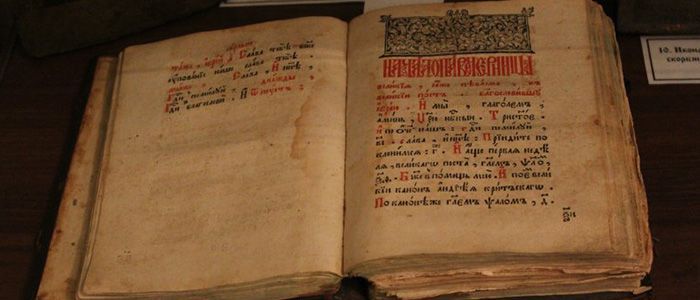

Worship in Christianity is also made up of certain parts that are time-dependent. The entire procedure is regulated in detail in a special book, the Book of Hours. It contains recommendations on which texts should be read depending on the time of day.
The image of time is evident even in the fact that one of the varieties of Orthodox Church is called a "chapel. This structure does not have a traditional altar, but it has all the other attributes of an ordinary church.


Christian culture, which is not directly related to religion, also uses images of time. For example, very often in the visual art of the Middle Ages appeared the image of a skeleton, which invisibly accompanies people in moments of enjoyment of life. As a rule, it is depicted with an hourglass, indicating the waste of time and the end of earthly existence.


Omen with the clock
The people tend to associate each piece of clothing or jewelry with a number of special omens. About watches also walks a lot of beliefs - here are some of them:
- Watches can't be used as gifts
Why not? If you present them to a person on their birthday, they will take their life with every second. Or, if you have presented such a gift to young lovers on the day of their marriage, their union will soon fall apart - and the clock has already started its countdown.
Some magicians recommend to give a coin in return, to neutralize the effect of negative energy. Whether it is necessary to believe such legends is unknown, but the fact remains that many people prefer to avoid such gifts.
- The watch, passed down from generation to generation, is a protective amulet for the whole family
If you inherited an old clock from your grandmother or grandfather, it means that you are protected by the Higher Powers. Every year this item absorbs energy - and every year it becomes stronger and stronger. Magical clock ward off spoilages, curses and evil eye.
Symbol of the hourglass on the monuments
The hourglass in which the sand flows from the top to the bottom often symbolizes the transience of life and the end of earthly existence. Therefore, they are depicted on monuments and tombstones. Especially often such symbols were used in burials in the sixteenth and eighteenth centuries. In some cases, a flask with a clock was even placed in the coffin before burial.
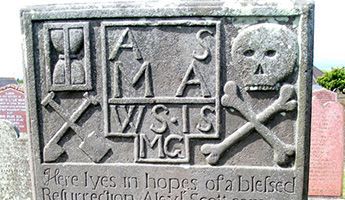

Nowadays, the hourglass is used to decorate monuments not so often. They have been replaced by other symbols. You can order a headstone for the grave of your loved one or relative in our company. Our specialists are knowledgeable in ritual symbolism and will develop a design of the monument for you that will comply with religious and secular canons. It will reflect all your love and the pain of loss.
What does the clock tattoo mean for men?
Like all symbols that have a general philosophical meaning, the symbol of a clock means about the same thing to both men and women. But there may be some purely psychological division, something more often chosen by men, something by women.
Men, having a more concrete way of thinking, more often than women choose personal symbols, such as the designation of a specific time by a clock. More often men do such a tattoo as a reminder that time passes, life does not stand still and we must hurry to live it, we need to act more actively and faster.
Where to put?
The hourglass tattoo is worn:
- on the arm;
- collarbone area;
- in the area of the bend of the elbow;
- between the shoulder blades;
- on the shoulder blade;
- on the ankle.
The process of applying the hourglass tattoo requires the master to follow certain rules to make the picture look three-dimensional. That is why the picture is not printed on all parts of the body, because it requires the use of high detail.
Variants, styles, compositions of tattoos
The hourglass tattoo is performed in the techniques of realism, new cheekbones, graphics and geometry. With special significance looks tattoo old skool, thrash polka with a restrained color scheme. In chicano or black and white techniques, a hawk head, ribbon and flowers can complement the drawing. Using hyper-realistic techniques, the emphasis is on sand and the transparency of glass.
What does the clock tattoo mean for women?
Women are often more exalted than men. Therefore, it is among women that tattoos with a reminder that death is near and life is only a moment are more common.
Also it is more common for women to imbue a tattoo with magical meaning, to make a setting to hold onto time by supernatural forces.
One way or another, a tattoo with a clock carries a very important and not always cheerful message. The person doing such a tattoo must have a philosophical and rather melancholic or choleric type of temperament in order not to be discordant with the tattoo.
Feng shui watch
- The device capable of measuring such an invisible and intangible element as time, even today remains a sacred object, so in the philosophy of Feng Shui it takes a special, honorable place. Specialists say that Feng Shui clockAs a symbol of transience of human life, should, firstly, correctly select for their homes, and secondly, to find them the most favorable place, then they will not only be a wonderful addition to the interior, but also be able to significantly improve the quality of your life energetically.
- From the very beginning it is worth mentioning that the experts in Feng Shui do not pay attention to electronic gadgets. It is considered that if you want to have them, then it is allowed only at work. And even then, with a great stretch. After all, they can greatly ruin the life of the owner - up to and including migraine.
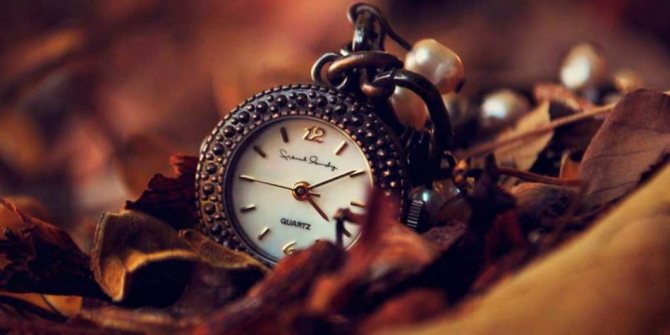

The watches
- Mechanical watches by Feng Shui - are the true masters of time and energy, which they can accelerate. If you have the right approach, they will easily create a favorable energetic atmosphere in your home, especially if you place them in those rooms where your household members spend most of their time engaged in active activities. In practice, such places are Rooms for receiving guests or professional activities, the kitchen, and so on.
- According to Feng Shui an hourglass - is a device that is often used in Feng Shui philosophy because it is made from natural materials and is therefore considered "alive". The smooth flow of the sand grains symbolizes infinity and activates the positive life energy of the space and the people in it.
- You can increase the beneficial effect of the hourglass on your home by purchasing a device in a wooden frame. This will significantly increase vitality in the places where you earn money (office, workshop and the like), will give impetus to new ideas and projects, will help learn new knowledge and skills and in general - will get rid of moping and laziness, indiscipline.
Tattoo Watches and Their Meaning
There are 24 time zones on Earth. China is located in 4 of them. However, the time across the country is the same. The government of the Celestial Empire issued a decree for its inhabitants to adjust their clocks according to Pikin.
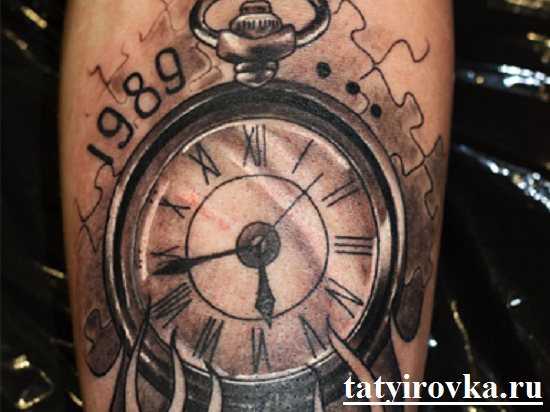

This is an example of how ambiguous time is and how differently it can be interpreted. The views on the "Clock" tattoo, a symbol of time, are also varied. Let's try to understand the meanings of paintings on the theme of the main resource in life.
The meaning of the tattoo "Clock"
Memory - the first interpretation of the tattoo "Clock". The meaning of Tattoo is associated with certain events. The hands on the dial count down the minutes and days that have passed since the moment of happiness, an important meeting or a bitter loss.
In addition to memories of the past, the clock can also point to future events. In this case, the picture serves as a reference point that does not let you stray from the right path.
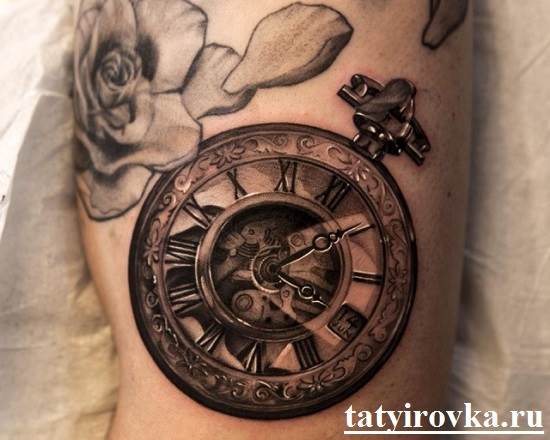

The phrase "like sand through the fingers" is reminiscent of the "Hourglass" tattoo.. The device was invented in Ancient Greece, particularly Athens. Back then, the hourglass with sand was proclaimed a sign of inexorability and inevitability.
Time slips away, seeps through the fingers and from the point of view of the inhabitants of Antiquity, the Gods are to blame. Hourglasses were associated with Zeus, Themis and Helios - the patron of the Sun.
The tattoo sketches "Clock" At the same time, they show the inevitability of death and the fact that a person still has time. There are minutes for important achievements. Nakolka helps to get together, take everything from life, not to "live" it in vain.
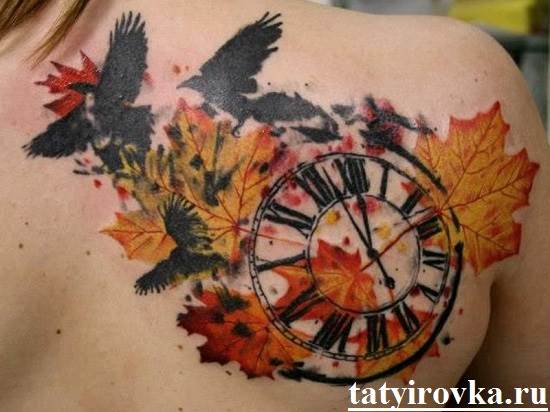

That is, drawings with clocks are motivators. They are often compared to tattoos dedicated to the sakura. Japanese cherry blossoms fall off in just a couple of days after opening. Equally fleeting is the passage of time. You have to have time to enjoy it.
What the tattoo watch means depends on the nuances of the image. For example, the dial without hands is an emblem of life lived in vain, a worthless existence. Models with a cuckoo - a tribute to the ancestors, the craving for antiquity and stability.
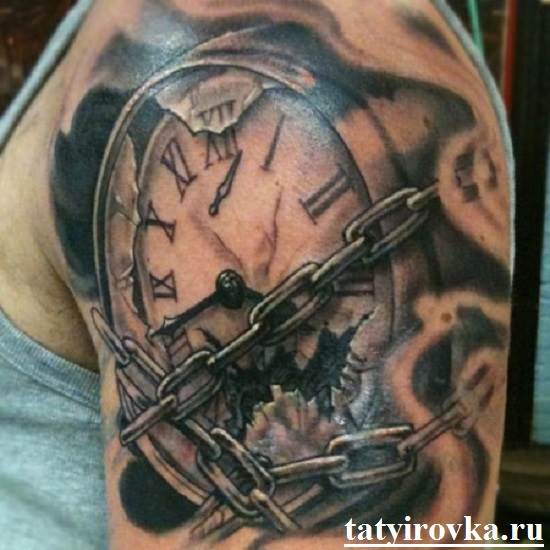

Bic-Ben - a symbol of England, and therefore, and primness, aristocratism. The sundial represents the connection with the sky, the cosmos. Hourglass tattoo - sketches, talking not only about the "friability" of time, but also the possibility of turning it over, at least to change your sense of minutes and days.
Popular "Clock" tattoo designs
The "Hourglass" tattoo, the meaning discussed above, is not a popular one. Apparently, the spirit of antiquity is alien to modern people. They more often request standard models with hands and dial. But the numbers on them are from Antiquity.
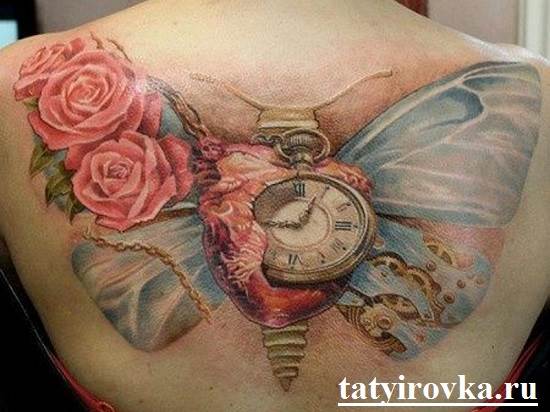

In 70% of cases, clients of tattoo parlors request a Roman designation. Images of watches on the back are also in demand. The internal mechanism of the accessory is drawn. This is a symbol that and time has a certain device. The main thing is to understand this device, to comprehend it.
The clock on the hand is a tattoo, used most often. Dials are also depicted between the shoulder blades, near the heart, or near the collarbone.
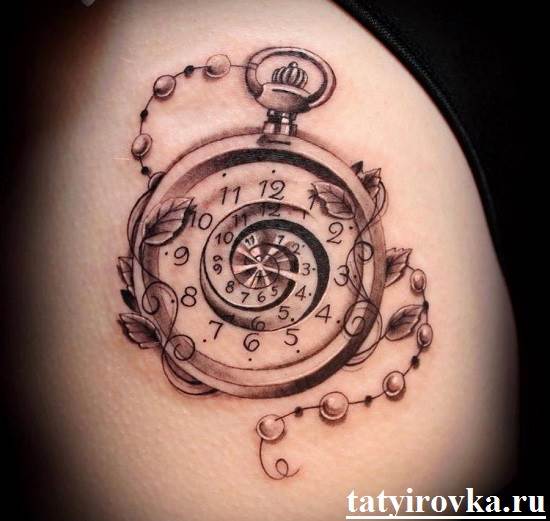

If a broken clock is drawn, it is a symbol of unfulfilled hopes, lost days. In reverence among fans of tattoos and models in the style of Salvador Dali. The shape of the clock indicates the fluidity of time. Not for nothing they say about it: "It's the river.
Often used sketches based on Lewis Carroll's fairy tale "Alice in Wonderland". One of the characters in the work is a rabbit. He does not part with his pocket watch and is always in a hurry somewhere. Therefore, and drawings with a fairy tale rabbit and a dial - a symbol of the constant rush, lack of minutes, hours, days.
Custom "Clock" Tattoo Sketches
Tattoo "clock" - photowhich often surprise with its strangeness. Instead of quartz particles in the sand models can be blood. It becomes a sign that time is life itself. To understand the tattoo can be otherwise: - existence is bloody and frightening.
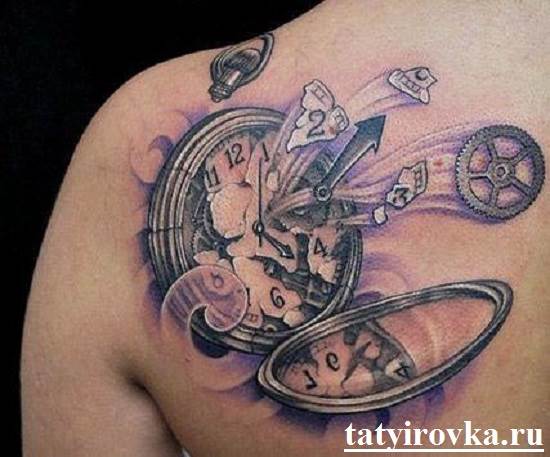

The "24 hours" tattoo is complemented by an open eye in the middle of the dial. This gives the impression that time is not just a physical substance, but someone. This someone, perhaps God, observes how we live our days, what we spend them on.
The "Half Hour" tattooLike a full-fledged image of a mechanism, it is represented in the form of a key. It unlocks and closes the door of life. The dial is placed on the handle of the key. If you paint it in gold, the price of time becomes clear.
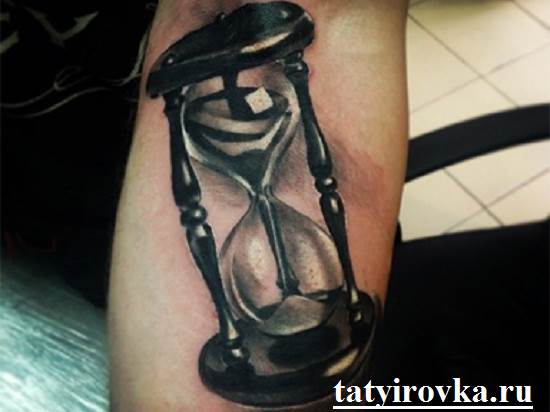

It should be treasured, because one day the seconds will "pull the trigger. With this in mind, some craftsmen suggest depicting a clock in the form of a gun.
The screen with the numbers is placed under the trigger. The gun can be shown in sectional view. This gives a better view of the inner workings of the gun and what it represents.
Tattoos are always depicted on the body. But, there are sketches that create the effect of cutting through, peeking out from under the skin. Artists draw the contours of wounds, cuts of flesh, as if revealing the insides of a person.


A clock peeking out of a gaping hole in the chest is a sign of a dramatic perception of life. If the mechanism is in the form of a heart, it is a symbol of the fact that time is at the heart of every human being: it is time that "runs" the blood through the veins.
The once ordinary watches can be non-standard as well. In ancient China, for example, they were harnesses with knotted knots. They were placed at equal distances from each other. Afterwards, the rope was set on fire, counting the number of knots burned.
This is how time was measured. With the passage of time, many traditions have fallen into oblivion. So, contemporaries understand the word "moment" as one, or a couple of seconds.
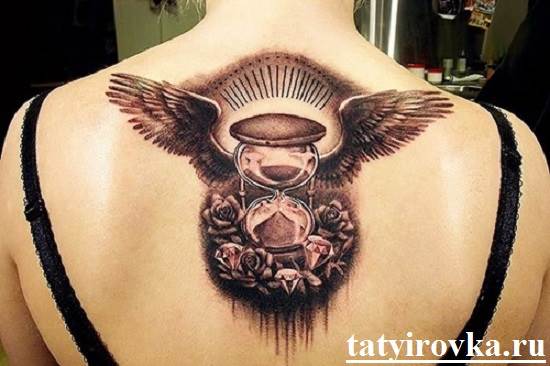

Meanwhile, the concept is English. A couple of centuries ago, a moment in Great Britain was called an interval of a minute and a half. Here is further evidence of the relativity of time and humanity's understanding of it.
https://www.youtube.com/watch?v=eugfMH6ReHw
Clocks according to Feng Shui: where to hang them?
In order to determine where you want to place the clock in your home, so that they not only look pleasing to the eye, but also bring maximum energetic benefit, you must formulate for yourself what the main problem in your life you want to solve.
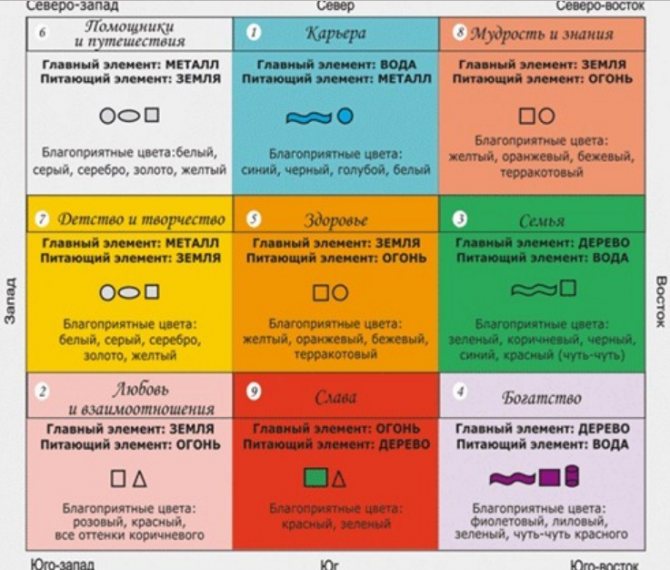

Location color and shape
On what part of the world you will be oriented, what materials the clock is made of and in what color scheme will depend on what they can help you - to the best of your abilities, believe me, not a small one:
- Orient for those who can't find their way is worth to those who cannot find a common language with the members of their family. That is, if you want to achieve mutual understanding and to stop quarrels, then place on the eastern wall of the dwelling round-shaped clock made of natural wood, painted in blue-violet-black color scheme.

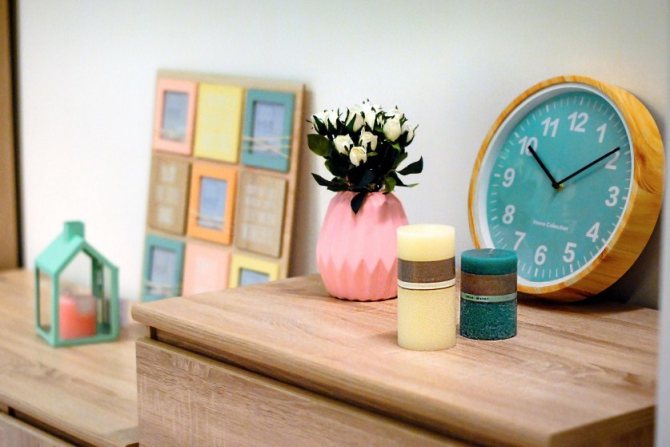
For mutual understanding - Southeast side of the house - is the best place for a clock for those people who want to get rich and to stop all money troubles. To this end, you should also choose round clock of green color.
- South wall to place clock by Feng Shui The Southern wall should be chosen by those who lack recognition of their successes and achievements in life, even, let's not shy of the word, real fame. Excellent if they have sharp corners - triangular or rectangular. triangular or rectangular, in red or green hues. And the more expensive they are, the better: ideally, let them be handmade extras.
- Southwest . - For those who are in pursuit of love experiences and affairs. The most appropriate geometry for you is. a triangle or square in a delicate, warm color (pink, yellow, beige or even orange). The material should also choose the most As fragile and romantic as possible: porcelain and ceramics.
- Harsh North. - is the side for career-minded people. Accordingly, and the watch should be chosen strict, "office", metal, mostly in cool colors: black, metallic, bluish and the like.


Strictness - The northeastern side of the dwelling is suitable for placing clocks for those people who crave learning, getting new information, self-development. In order to achieve the maximum energetic effect, you should choose round metal clocks - grey, black or blue.
- Northwest - This direction is for those who either lack helpers in any business or who want to go on a trip, but constantly something prevents them. As in the previous case, such people should look for A clock made of metal, rounded shape, in black and blue.
- The west wall of the house should be decorated with a white or silver metal clockIf you want to actively engage in creative work or to give birth and raise children. They can be made In round, square or oval shape.
